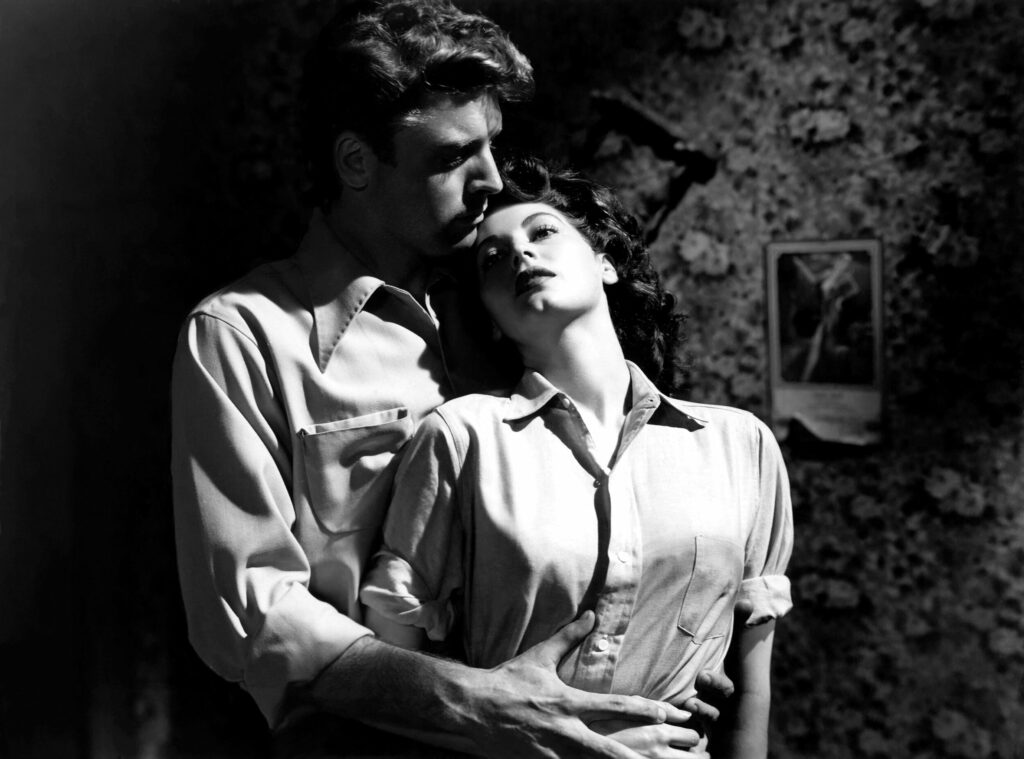
Film Noir is as celebrated and fetishized as it is misunderstood. The films considered Film Noir were only so labeled well after the fact in order to create a canon of motion pictures that shared specific aesthetic and narrative components. The films of Film Noir were made as a reaction to WWII that were executed in the style of German Expressionism which itself was a reaction to WWI. The Film Noir picture paints with the darkness of the great German silent films while telling hard boiled crime stories that reveal the existential crisis of men who survived the war.
This existential crisis has its roots in wartime trauma and survivor’s guilt. However, it is equally important to note that Film Noir is a reaction to the identity crisis men faced when returning home to discover that housewives had taken their jobs at factories and the like. It is this peculiar neurosis that ultimately gave rise to the Femme Fatale figure within Film Noir. More than anything Film Noir is about men; their psychology, their ideologies, and their fantasies. In the post-war period the films commonly thought of as Film Noir today epitomized this manliness like no other form of Hollywood picture.
Robert Siodmak’s film The Killers (1946) remains one of the quintessential texts of the Film Noir canon. Siodmak came to America around the same time as Edgar G. Ulmer, Fritz Lang, and Billy Wilder. And, like his fellow Germans, brought the artistic sensibility of the Ufa with him. The Killers looks like the crime films produced at Ufa before the rise of the Nazis even if its narrative is rooted in the American gumshoe genre.
The Killers helped establish and popularize many of the themes and stylistic tropes that would become Film Noir. The Killers made Ava Gardner one of the great Femme Fatales and turned Burt Lancaster into a matinee idol with a specialty for playing depressed losers. It also popularized the elaborate flashback structure that would become synonymous with Film Noir. But even more importantly The Killers proved that an average Joe like Edmond O’Brien could be a hero (even in a silly bowtie).
The role of The Killers in creating Film Noir is why the film is, to this day, essential. However, what is most interesting about The Killers is how it diverges from the standards of Film Noir. Gardner’s Kitty Collins may be one of the great Femme Fatales but she is by no means ordinary. Her appearance as a humiliated and eager to be emancipated house wife in the third act of the film gives her an agency that the very trope of the Femme Fatale is meant to negate.
The Femme Fatale is an archetype that represents the threat of female sexuality and autonomous agency to men. Collins begins (in flashbacks) as a bonafide Femme Fatale only to reappear at a rendezvous with O’Brien’s Jim Reardon as a docile, domesticated housewife. Yet, when she is last seen, Kitty Collins is the spirit of feminine vengeance that has exacted a terrible retribution on her crime boss husband. In terms of female archetypes, Collins’ journey could be said to go from Femme Fatale to Black Widow over the course of the deaths of Burt Lancaster and Albert Dekker. It’s as if the twin sisters played by Maria Montez in Siodmak’s Cobra Woman (1944) had been combined as acts in Kitty Collins life.
Of course Kitty Collins’ narrative in the context of the whole of The Killers is relatively small though not unimportant. It is this single character in The Killers that places Siodmak’s film at the intersection between Film Noir and the Noir infused woman’s pictures by Douglas Sirk and Ida Lupino. Kitty Collins suggests the trajectories of these other films while still managing to be a central part of a Film Noir classic.
